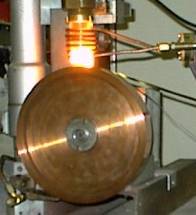The former Metals Research Department
Research groups:
For further information about the current research activity of the former research topics, please follow these links.
History of the Department
Metals research in the Institute was initiated some forty years ago by experimental and theoretical investigations of impurities in pure metals followed by interest in ordered and disordered multi-component alloys with a view to controlling electrical, mechanical and magnetic characteristics for practical applications. Considerable effort was directed towards rapid quench grown metallic glasses and the influence of hydrogen. This research laid the groundwork for the present interest in nanocrystalline alloys and in solid state reactions and nanogrowths in geophysical processes. In addition to these three dimensional systems, recent work has been directed towards giant magneto-resistance layered structures, quasi- two dimensional and quasi- one dimensional normal and superconducting systems. Attention has most recently been focused on strictly two-dimensional systems of electrons at interfaces and in single layer graphene sheets.
A new interdisciplinary activity centred on NMR spectroscopy concerns hydration structure around proteins in biological solutions.
 |
Rapid quench splat cooling device for fabrication of amorphous alloys: The induction melted alloy is sprayed onto spinning cold copper disc which cools the melt at about 105 Ks-1 to give rise to the solidified ribbon that can just be discerned in the photo.
|

Members of the Metals Research Department. Photo taken at the birthday party of our three retired colleagues (János Takács [80], Kálmán Tompa [70], and Géza Szabó[70]), in 2005. Click on the image for a high resolution version.